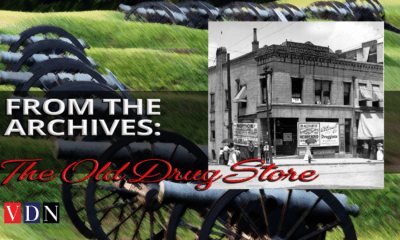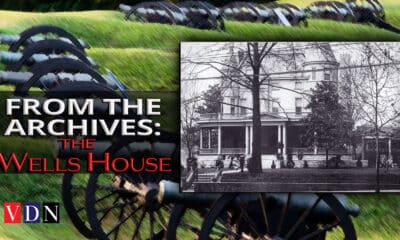Vicksburg History
From the Archives: St. Paul’s Rectory

By Nancy Bell, Vicksburg Foundation for Historic Preservation.
St. Paul’s Rectory, located on the north side of Crawford Street between Washington and Walnut streets, was built in 1866. It was designed by Father Jean Baptist Mouton, who also designed the St. Francis Convent on Crawford Street, now a part of the Southern Cultural Heritage Center. The rectory was a significant example of Gothic Revival architecture and was partially prefabricated by the M. H. Cook Company of Cincinnati, Ohio.
Father Francis Xavier LeRay, the first occupant, was the pastor at St. Paul from 1859-1877 and Father Mouton was his assistant. LeRay was a chaplain in the Confederate Army, bishop of Natchitoches, Louisiana, and the Archbishop of New Orleans until his death in 1887. He was instrumental in bringing the Sisters of Mercy to Vicksburg to establish St. Francis Xavier in 1860.
Father LeRay and Episcopal Bishop Green had a running feud of sorts that played out in the papers in 1867 because the bishop had belittled Catholics at an Episcopal convention. The back and forth through letters to the editor continued for weeks, with no evident conclusion (however, some editions of the paper are lost).
An article in the Vicksburg Daily Times on January 30, 1868 reported that “We learn that night before last, an unmitigated scoundrel entered the Catholic parsonage, with the intention of committing robbery, no doubt expecting to find some of the silver service belonging to the Church. The noise he made aroused Father LeRay, who called out who was there and what he wanted! The thief said that someone was sick and wanted to see the Priest. Father LeRay asked him where at. The thief replied, at 121 Canal Street. (He is evidently from New Orleans.) Father LeRay told him there was no such street in this city, and called the assistant priest, and the robber hearing his footsteps, immediately decamped. It was found that he made his entrance by taking out a window, and had overturned everything in the Sacristy in his search after valuables.”
Among the visitors who stayed in the rectory was Father Abram Ryan, poet of the Confederacy and the author of “Furl the Banner.” Father Ryan, lovingly referred to as the poet-priest, spoke before a full house at the Vicksburg Opera House on May 18, 1881. The Vicksburg Herald reported that “the name of Father Ryan is a household word. It is known wherever the English language is spoken, and everywhere it is reverenced as the appellation of a true child of song. Besides, he is truly eloquent, and the tones of his clarion voice have in them a spirit and melody that thrills and inspires like the music of his tuneful harp. He loves right and hates wrong. He loves Ireland and idolizes the South. ‘A land without ruins,’ he says, ‘is a land without memories – a land without memories is a land without history. A land that wears a laurel crown may be fair to see, but twine a few sad cypress leaves around the brow of any land, and be that land barren, beautiless and bleak, it becomes lovely in its consecrated coronet of sorrow, and wins the sympathy of the heart and history.'” The admission charged for the lecture was donated to the Catholic and Protestant orphan asylums in Natchez.
The rectory was demolished in 1972 and a new one, seen here, was erected.
See a typo? Report it here.














